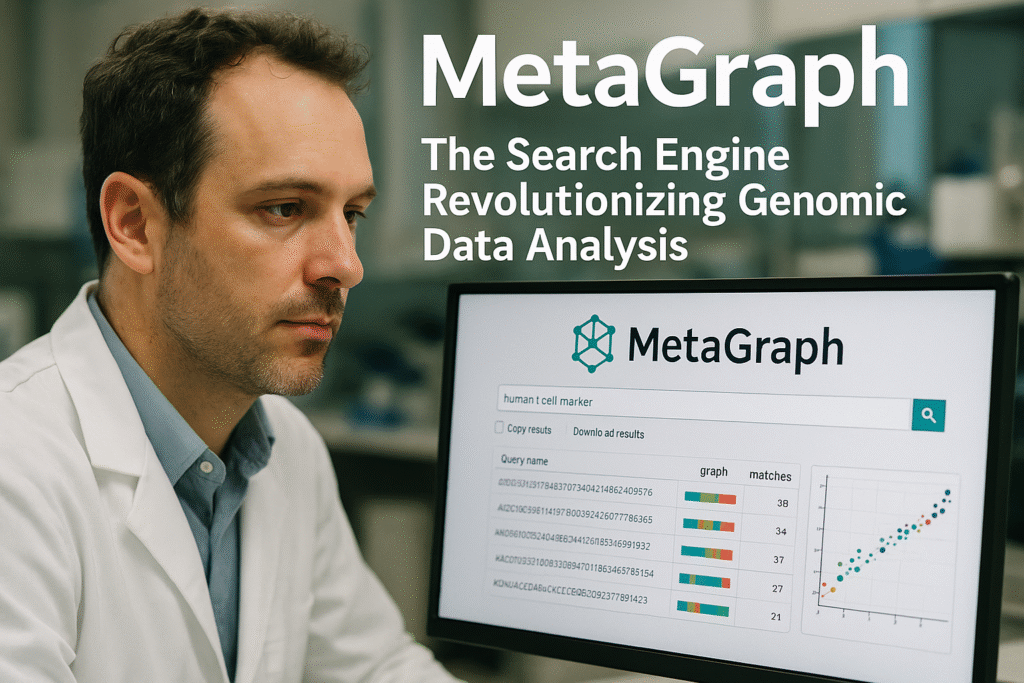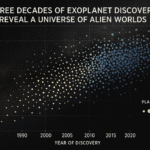By Harshit | October 8, 2025 | Zurich, Switzerland | 09:00 AM CET
A Google for Biology
The internet has Google. Now, biology has MetaGraph. Published today in Nature, the platform is being hailed as a breakthrough for its ability to index and search enormous volumes of genomic data stored in public repositories.
“It’s a huge achievement,” said Rayan Chikhi, a computational biologist at the Pasteur Institute in Paris. “They set a new standard for analyzing raw biological data.”
Unlike keyword-based engines, MetaGraph works more like YouTube’s content discovery system. Just as a YouTube search for “red balloons” can return videos without that phrase in the title, MetaGraph can detect hidden genetic patterns in raw sequencing data, even if they have never been annotated.
Why MetaGraph Was Needed
Genomics has entered an age of extreme data abundance. Public archives like the Sequence Read Archive (SRA) now hold more than 100 million billion DNA letters — far more than the number of web pages Google indexes.
But more data does not automatically mean more knowledge. With sequencing reads fragmented, noisy, and overwhelming in scale, many scientists have struggled to extract meaningful answers.
“The volume of the data, paradoxically, is the main inhibitor of us actually using the data,” said molecular data researcher Mike Babaian. MetaGraph was designed specifically to break through this barrier, transforming vast repositories into searchable, usable knowledge.
How MetaGraph Works
The innovation rests on graph theory. Instead of viewing DNA sequences as isolated strings, MetaGraph connects overlapping fragments like links in a network. This creates a graph structure, similar to how a book index ties related terms across pages.
Key highlights of the database include:
- 18.8 million unique DNA and RNA sequence sets
- 210 billion amino acid sequence sets
- Coverage spanning viruses, bacteria, fungi, plants, animals, and humans
By integrating seven major public repositories, MetaGraph built the largest interconnected genomic index to date. Researchers can now type in queries through a search engine interface and instantly pull up relevant genetic data — a task that was previously unthinkable.
“It is a totally new way to interact with this body of data,” explained André Kahles, study co-author and bioinformatician at ETH Zurich. “It’s compressed, but accessible on the fly.”
Scientific Applications
MetaGraph’s potential uses span nearly every area of biology and medicine:
- Infectious diseases: Search for viral sequences hidden in human samples, improving outbreak detection.
- Oncology: Highlight oncogene expression across patient groups, accelerating biomarker discovery.
- Antibiotic resistance: Track resistance genes in microbial populations.
- Agriculture: Compare gene regulation in plants to improve breeding strategies.
- Evolutionary biology: Identify rare mutations and trace species’ genetic adaptations.
Already, researchers have used MetaGraph to scan large-scale cancer datasets, surfacing patterns in tumor biology that could speed up diagnostics and treatment.
Expert Perspectives
The scientific community has responded with excitement. Chikhi noted that MetaGraph enables research tasks “that cannot be done in any other way.”
Other experts highlight the democratizing effect of the platform. Until now, only well-funded institutions with vast computational resources could work at the petabase scale. MetaGraph’s searchable interface lowers the barrier, giving smaller labs equal access to global genomic archives.
Challenges and the Road Ahead
Despite its promise, challenges remain. Maintaining and updating such a massive index will require enormous infrastructure and funding. Ethical concerns are also front and center: when human genomic data is involved, privacy protections must be airtight.
Even with these caveats, MetaGraph represents a leap forward. By transforming petabytes of sequencing data from an inaccessible archive into a searchable library, it could accelerate discoveries across genetics, biotechnology, and medicine.
As Kahles summarized:
“We wanted to give researchers a way to actually use the world’s sequencing data. MetaGraph makes that possible.”







